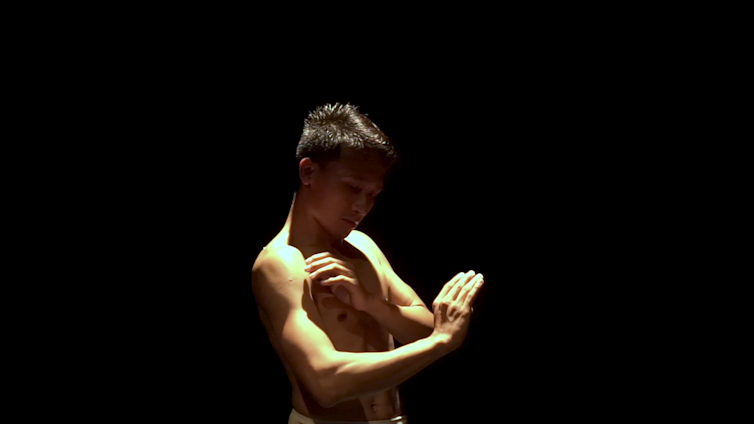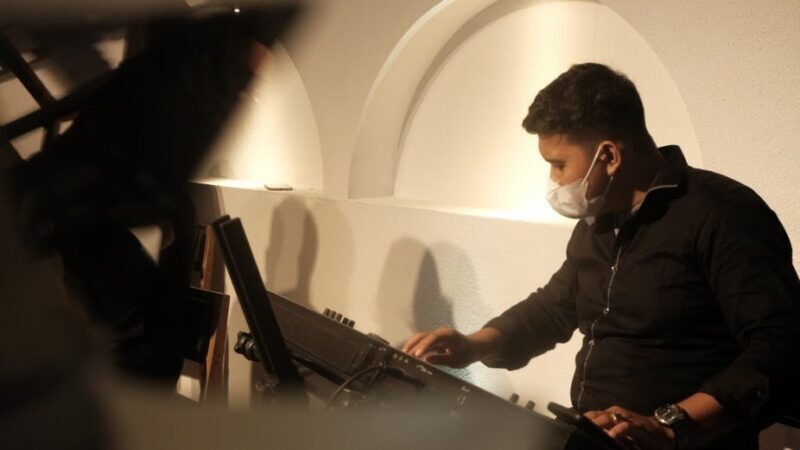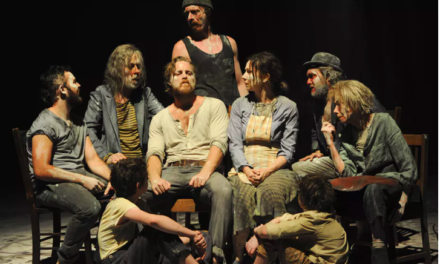The 29-year-old usually travels between Yogyakarta and Jakarta, Indonesia’s capital, for a number of projects. However, COVID-19 has forced her to stay in her hometown.
“I received an offer from a film producer. Of course I accepted. But now I have to tend to my small catering business too,” she said when we interviewed her last October.
Danastri is one of 172,000 creative workers in Yogyakarta who have had to seek alternative sources of income to make ends meet and continue their artistic endeavours.
The pandemic has battered the arts and culture sector in Indonesia. Many producers and organizers have been forced to cancel events, concerts and movie releases.
A recent survey by the Jakarta-based creative workers’ collective, SINDIKASI, shows nearly half (42%) of 144 respondents have had to rely on their personal savings to get by, while 22% have had to borrow money from friends and family.
In our latest research, we sought to understand how the pandemic has impacted young creative workers who make up around 18% of the total number of people working in Indonesia’s creative sector. The economic contribution of this sector amounted to nearly 5% of the country’s Gross Domestic Product (GDP) in 2019.
The study was done in Yogyakarta, home to the largest community of creative workers in Indonesia. The province contributed Rp 3.3 trillion (around US$208 million) to the national economy in 2016 – the largest among the country’s many provinces.
We found a combination of many factors determine how these creative workers in Yogyakarta respond to the pandemic. These factors include demographic background, social class, network and artistic capabilities.
In turn, these factors help the creative workers seek the best strategies to stay productive in these turbulent times.
Turbulent times in Yogyakarta
Our team conducted in-depth interviews with 30 young workers in Yogyakarta from a number of creative fields such as film, dance, photography, fashion, music and theatre.
Due to COVID-19, we selected informants and held all focus group discussions online.
These interviews and discussions were held in October 2020, so the study captures the conditions in Yogyakarta after eight months of the pandemic.
We found the coping strategies of these creative workers vary.
Some were caught off guard by the pandemic and forced to postpone their plans and projects. Some even developed signs of social anxiety and are still reeling from the effects of lockdowns and social restrictions.
Others chose to remain patient and observe how the industry will adapt, while relying on their personal savings to cover daily expenses. The rest found new sources of income and business opportunities.
We found a number of factors affected which of these responses were taken by Yogyakarta’s diverse community of young artists. These factors included their social class, artistic skills and professional networks.
As their incomes have shrunk while their savings remain limited, a large chunk of our informants have had to try their luck in other sectors to survive during the pandemic.
Meyda Bestari (27), a producer for a small puppet theatre group in Yogyakarta, has had to work as a translator and web consultant to scrape by. Her husband Rangga, who also studies theatre in the Indonesian Institute of the Arts in Yogyakarta, on the other hand, is growing a gecko-breeding business, which has saved them financially.
This is also what Danastri experienced. However, despite the many limitations imposed by the pandemic, Danastri is able to stay productive as she has access to a solid network of some of the best filmmaking communities in Jakarta and Yogyakarta. This allows her to continue working on a number of productions.
Professional connections with other artists determine what options these young creative workers have to continue working on projects during the pandemic.

Irwanda Putra (24) is a professional dancer involved in this study. In March 2021, Irwanda performed his solo composition in the 8×3 Festival held by the research team. PC: Documentation of the Youth Studies Centre, Universitas Gadjah Mada (UGM) in Yogyakarta.
Agni Tirta (35), a filmmaker based in Yogyakarta, is the founder of the Belantara Film production house and also the head of the Yogyakarta Filmmakers’ Community (Paguyuban Filmmaker Jogja, or PFJ).
During the pandemic, Agni says they have lost a number of jobs. However, their years of relations with officials in the city’s Department of Culture has helped them find new work opportunities.
With the PFJ, Agni managed to arrange funding from the department to support filmmakers in Yogyakarta during the pandemic.
Agni’s extensive experience in Yogyakarta’s filmmaking scene has helped him build the network and reputation needed to get by in challenging times.
However, the story of Yogyakarta-based musician Adrian Muhammad (31) paints a different picture and proves that just having musical capabilities may not be enough.
Adrian is part of a well-known orchestra in Jakarta, but he was forced to return to his hometown after all his shows and projects were canceled.
Despite his proven skills as a musician, Adrian now has to start from the bottom again in Yogyakarta. He does not have a solid professional network of artists, as is the case with Agni and Danastri.
While looking for opportunities, the father of two even dipped his toes in a number of attempts at business, including selling frozen food and used cars.
However, his instinct for music leads him to come up with fresh artistic ideas from time to time.
“I have plans to compose songs for children […] such as [the famous Indonesian children’s song] Naik-Naik ke Puncak Gunung, and collaborate with other artists who can make animations,” he said.
Is there hope ahead?
From the findings above, we conclude that young creative workers in Yogyakarta possess a strong drive to get through the pandemic. With all the limitations due to social restrictions, they have still managed to adapt to challenges in their respective fields.
Some have even successfully created new strategies to stay productive during the pandemic.
However, the stories we gathered from these creative workers show a need for the government to better support Indonesian artists.

This creative exhibition is part of the 8X3 Festival. The event is a collaboration between the research team and young creative workers involved in this study. PC: Documentation of the Youth Studies Centre, Universitas Gadjah Mada (UGM) in Yogyakarta.
From their experiences, we note the urgency of sustaining various collectives that can help young creative workers stay connected with not only each other but also national and global stakeholders in the creative economy.
These collectives include but are not limited to groups of individuals who work together, share connections and collaborate on projects.
Establishing sustainable collectives will help young creative workers by tapping into the network and artistic assets of its members, particularly in challenging times such as the COVID-19 pandemic.
Young creative workers can use these collectives to better communicate and share information on jobs and project opportunities. They can access its members’ digital talents – something that has grown in importance as the economy becomes increasingly online. Collectives can also drive artists to keep innovating and finding new ways to show their art.
We hope that, through these initiatives, Yogyakarta can be a site for a pilot project to create a sustainable creative ecosystem.
This research is funded by the Australian government through the PAIR program facilitated by the Australia-Indonesia Centre (AIC).
The Australia-Indonesia Centre (AIC) supports The Conversation Indonesia (TCID) in the publication of this article.
This article was originally published on The Conversation on August 18, 2021, and has been reposted with permission. To read the original article, please click here.
This post was written by the author in their personal capacity.The opinions expressed in this article are the author’s own and do not reflect the view of The Theatre Times, their staff or collaborators.
This post was written by Oki Rahadianto Sutopo, Annisa R Beta, Arian Utomo, Gregorius Ragil Wibawanto, and Novi Kurnia.
The views expressed here belong to the author and do not necessarily reflect our views and opinions.


















